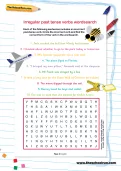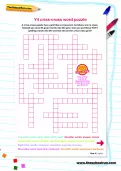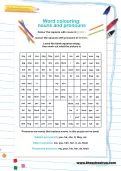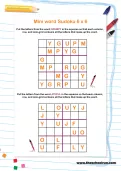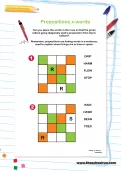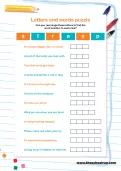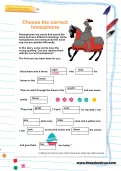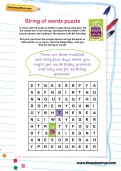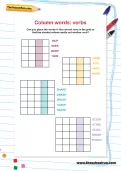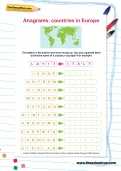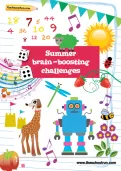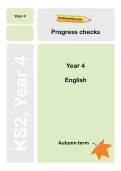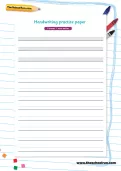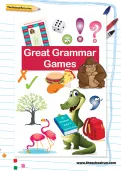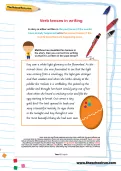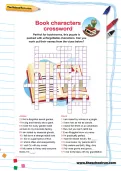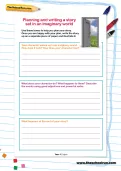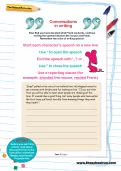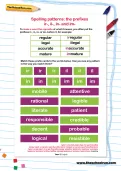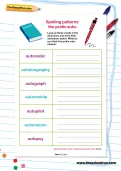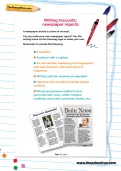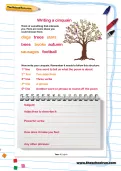Prepositions are linking words in a sentence, used to explain where things are in time or space. Can you place the words in the rows so that the green letters going diagonally spell a preposition from top to bottom?
or
Register to add to your saved resources
Put the letters from the word GRUMPY in the squares so that each column, row, and mini-grid contains all the letters that make up the word.
or
Register to add to your saved resources
Can you rearrange these letters to find the word solution to each clue?
or
Register to add to your saved resources
Already a subscriber? to view this content.
Homophones are words that sound the same but have different meanings. Some homophones are pronounced the same way but are spelled differently. In this story, some words have the
wrong spelling. Can you replace them with the correct homophone?
or
Register to add to your saved resources
Already a subscriber? to view this content.
A Lewis Carroll quote is hidden inside the puzzle grid. All the words are in one string, starting with the letter in the purple square and ending in the square with the full stop. Put your pencil on the purple square and go forwards or backwards, up or down, (but not diagonally), until you find the string of words.
or
Register to add to your saved resources
Already a subscriber? to view this content.
Can you place the words in the correct rows in the grid so that the shaded column spells out another verb?
or
Register to add to your saved resources
The letters in the boxes have been mixed up. Can you unjumble them to find the name of a country in Europe?
or
Register to add to your saved resources
Already a subscriber? to view this content.
Put Y4 literacy skills and knowledge into practice the fun way with wordsearches, mix and match activities, play scripts and more - a great way to revise over the summer holidays to prepare for the challenges of the next school year.
or
Register to add to your saved resources
Already a subscriber? to view this content.
Juggle fruit. Work on the technology of the future. Plot and design a lost city, create a zoo of invented animals, learn to talk sdrawkcab and bake a pizza clock and a pastry map. How many of our wonderful brain-boosting challenges can you fit into your summer? All you need are some art materials, imagination and an enquiring mind to have a go at a whole host of practical and reflective activities, suitable for primary-school children (and parents, of course). Have fun!
or
Register to add to your saved resources
Already a subscriber? to view this content.
Homophones, non-fiction texts, using paragraphs correctly and the possessive apostrophe – all part of the literacy curriculum for Y4. Check your child's understanding of key topics and identify any areas they need to practise and revise with our Y4 English Progress checks.
or
Register to add to your saved resources
Help your child form letters at the correct relative size and place them correctly on the 'base' writing line with our free printable handwriting practice sheets. Two formats with guidelines are included, one for beginner writers and one to help children improve their handwriting skills.
or
Register to add to your saved resources
From proper nouns to pronouns, statements to subordinate clauses and articles to adverbs, help your child revise grammar the fun way with our Great Grammar Games learning pack. A friendly, grammar- and flamingo-obsessed Grammar Gator offers tips, tricks, exercises and activities to help your child practise all aspects of basic English grammar in play-packed sessions.
or
Register to add to your saved resources
Already a subscriber? to view this content.
A story is either written in the past tense (if the events have already happened) or in the present tense (if the events described are happening now). Matthew has muddled his tenses in
his story. Can you correct his writing so that it is written in the past tense?
or
Register to add to your saved resources
Already a subscriber? to view this content.
Classic characters are unforgettable, whether they're falling down unusual rabbit holes, prowling through the jungle or breaking their slates over unfortunate classmates' heads. How many famous characters from children's literature can you identify in this crossword puzzle?
or
Register to add to your saved resources
Green or barren, deserted or populated by amazing creatures – it's time to enter an imaginary world! Your child will need to write a story set in an environment of their choosing, using the planning frame to help them organise their ideas before they put pen to paper.
or
Register to add to your saved resources
Continue a conversation between two characters, remembering the rules of writing speech: Start each character’s speech on a new line, use “ to open the speech, end the speech with !, ? or , and use ” to close the speech. Don't forget to use a reporting clause (for example: shouted the mouse, replied Frank), too!
or
Register to add to your saved resources
Already a subscriber? to view this content.
To make a word the opposite of what it means, you often put the prefixes ir-, il-, in- or im- before it. Match these prefix cards to the words below. Can you see any pattern in the way you match them?
or
Register to add to your saved resources
Already a subscriber? to view this content.
Look up these words in the dictionary and write their definitions below. What do you think the prefix auto means?
or
Register to add to your saved resources
A newspaper article is a form of recount. Can you write your own newspaper report? Use the writing frame provided or make your own. Remember to include all the important features of a newspaper article.
or
Register to add to your saved resources
Already a subscriber? to view this content.
Think of something that interests you and write a cinquain about it. Remember to follow the correct structure.
or
Register to add to your saved resources
